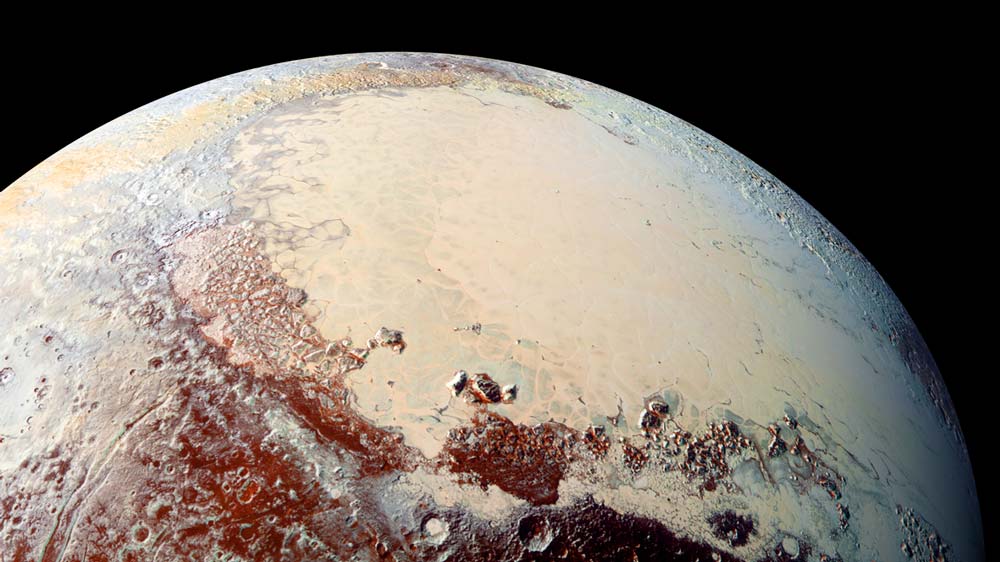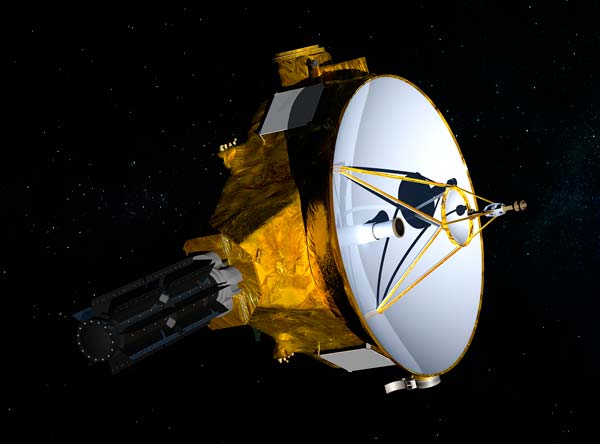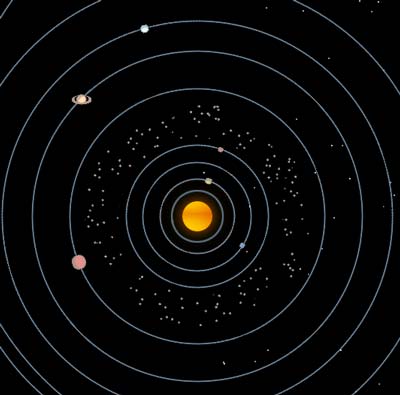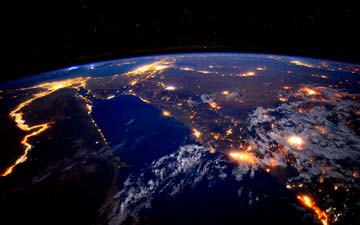PLANET PLUTO
Why Pluto Never Should Have Left the Solar System and Why We Must Put It Back
by Bill Georgevich, Chief Astronomer
If you were born after 1930 or before 2006, you grew up with a 9-planet solar system. And if you attended New Mexico State University in the early 1970’s and studied astronomy like I did, you would have taken a class or two with Clyde Tombaugh, Pluto’s discoverer.
Pluto was the last planet added to our solar system, and astronomers were looking for it for a long time. Because of slight changes in the orbit of Neptune (the 8th planet and the last of the non-rocky-gas giants like Jupiter, Saturn and Uranus), astronomers suspected a 9th planet.
The problem was where to look. Clyde Tombaugh had come to Flagstaff, AZ as a young man to work at Lowell Observatory. Clyde was given a shot at discovering the 9th planet and borrowed an unused 13” reflecting telescope to take pictures of the sky where astronomers thought Pluto might be. Everyone thought that the 9th planet might be huge, but Clyde thought regardless of its size it might be so distant as to not show a disc in the telescope but simply be a point of light like a star. He used an instrument called a photographic blink comparator to spot any object that was not fixed—in other words, moving like a planet would. After all, the word planet means “wanderer”.
The contraption compared photographs of the same section of sky taken on consecutive nights. By blinking back and forth between before and after photographic sky images, an astronomer could see movement. If a little dot of light was moving, it could be an asteroid, comet or undiscovered planet. Tombaugh began his search in 1929 and sure enough, on Feb. 18, 1930, he confirmed an object out past Neptune.
Because Pluto was discovered at Lowell Observatory, astronomers there had naming rights to the new planet. Over 1,000 thousand names were suggested, and the observatory chose Pluto, the god of the Underworld, submitted by Venetia Burney, an 11-year-old schoolgirl in Oxford, England with an interest in classical mythology. And so Pluto joined the solar system as the 9th planet.

So what dislodged Pluto from the pantheon of the planets?
Was it the Hubble Space Telescope? Was it the New Horizons spacecraft’s visit to Pluto on July of 2015? No, it was neither space telescope nor space probe. It was a man—neither behind a telescope nor part of a scientific astronomical team.
It was, in fact, a man in charge of a famous planetarium—the Hayden Planetarium in New York City. And because of this man’s desire for recognition and fame, Pluto lost its place in the solar system. It all began when he literally moved Pluto out of the planetarium’s solar system display.
In 1999 in Natural History Magazine this man, Hayden Planetarium Director Neil deGrasse Tyson, said this:
“Maybe Pluto isn’t really a planet. Dare I have made such a suggestion when Clyde Tombaugh’s body is barely cold? Tombaugh died in 1997, at the age of ninety, seemingly secure in his status as the third person ever to discover a planet in our solar system. But there is no question that if Pluto were discovered today, it would not be classified as a planet.”
 When the New Horizons Pluto probe was launched on January 19, 2006, Pluto was still the 9th planet. But on August 24 of the same year, the International Astronomical Union (the international body that classifies celestial objects) voted to demote Pluto out of being the 9th planet with a new classification of ‘dwarf planet’.
When the New Horizons Pluto probe was launched on January 19, 2006, Pluto was still the 9th planet. But on August 24 of the same year, the International Astronomical Union (the international body that classifies celestial objects) voted to demote Pluto out of being the 9th planet with a new classification of ‘dwarf planet’.
Had Dr. Tyson’s propaganda campaign that began in 1999 succeeded in convincing the nearly 10,000 members of the IAU to vote Pluto out of the solar system? No—the vote was mysteriously taken during the closing session with only 394 of the 9,500 members present. And was the decision made by this small minority unanimous? Absolutely not! 237 voted to demote Pluto and 157 voted against, which means that 80 people (or less than 1% of the astronomical governing body) threw Pluto out of the solar system after everyone else had left the conference.
While the scientific justifications for why Pluto was deemed a dwarf planet were being seriously argued by astronomers like myself, Dr. Tyson came out with his book The Pluto Files: The Rise and Fall of America’s Favorite Planet, which became a NY Times best-seller and helped catapult Dr. Tyson to international fame and fortune. How handy to write a best-seller about a planet controversy you began.
The New Horizons Pluto Probe proves that Pluto is indeed round like a planet and provides other data that can reinstate Pluto as our 9th planet. But in the meantime, we will make the same chess move that Dr. Tyson made at the Hayden Planetarium. We will not wait for the IAU to reverse its decision as new data from the New Horizons probe is digested and interpreted. We will put Pluto back in the solar system now, respecting the unheard voices of the 99% of astronomers who were not afforded the opportunity to cast their vote or debate the issue back in 2006. We proudly return Pluto back to our solar system where it belongs and celebrate Clyde Tombaugh, discoverer of Pluto and my astronomical mentor.
 See an animation of the movement of planets in our solar system.
See an animation of the movement of planets in our solar system. See amazing views from space
See amazing views from space